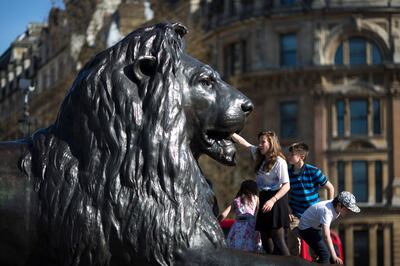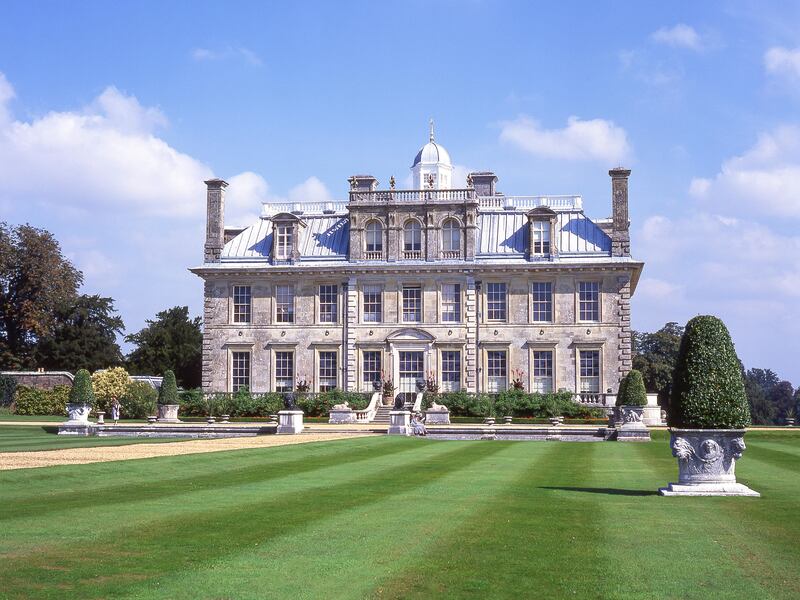Four priceless tortoises stolen almost 30 years ago from a British country mansion, owned by an Egyptologist, have been returned.
The pieces were custom-made for 19th century Egyptologist William John Bankes in France.
While in Paris in 1853, Bankes commissioned the Italian-born sculptor Baron Carlo Marochetti to produce a set of 16 bronze sculptures of tortoises to support four Verona marble urns for the grounds of his family home, Kingston Lacy, near Wimborne Minster, in Dorset, south-west England.
In 1992, four of the pieces were stolen from the grounds and the National Trust, which now owns the property, had lost hope that they would be retrieved.
But decades later, a former National Trust employee spotted an entry in an auction catalogue for a bronze tortoise and contacted the heritage charity in case it was one of the stolen pieces.
“Hope had faded over the years of recovering the stolen bronzes, and so I was astonished this spring to be contacted by Tim Knox, director of the royal collection and a former head curator at the National Trust, to say that he had seen a cast bronze tortoise, made by Marochetti, listed for auction,” James Rothwell, decorative arts curator at the National Trust, said.
“Close inspection of the tortoise revealed it was identical to those still at Kingston Lacy. Telltale signs that confirmed the identification were the hole in the tortoise’s carapace where it had been attached to the urn, and the Roman numeral ‘I’ branded into the bronze, which was part of Marochetti’s system for numbering each set of four.
“The tortoise’s owner had purchased it online and subsequently put it up for sale. Once he and the auction house learned that it was in fact a cast of Bankes’ beloved pet, they withdrew it from the sale and returned it to the team at Kingston Lacy.”
The tortoises supported the urns at Kingston Lacy for over 140 years until four were stolen.
The theft was reported to the police, and staff removed the remaining bronze tortoises for safe keeping, replacing them with 16 replicas commissioned soon after. These have remained in place ever since.
After the discovery of the first tortoise, the National Trust then traced it back to an antiques dealer who had acquired the set of four from a scrap dealer who was unaware of their history.
He returned the remaining three to Kingston Lacy and now the pieces will be going on display for visitors to see.
Bankes had a fondness for tortoises and kept several as pets.
When he commissioned the pieces from Marochetti, who is famed for casting the lions that guard Nelson’s column in Trafalgar Square, he was determined for the sculptures to be as accurate as possible, and supplied the artist with one of his pet tortoises as a model.
The sculptor’s studio in Paris carefully created a mould from the animal which was used to cast identical bronzes.
Afterwards, Bankes collected the tortoise and even wrote to his sister Anne, “Think of my carrying a live tortoise in a bag all the way from the Palais Royal!”

“We know that William John Bankes loved tortoises, not only because he kept them as pets and from the commission of the bronzes for the urns, but from other clues around the house, for example, he added tortoises to the bases of the two Italian giltwood candelabra in the saloon,” Dr Elena Greer, property curator at Kingston Lacy, said.
“The idea of the tortoise or turtle holding up the earth on its back is referenced in a number of mythologies and appears in John Locke’s An Essay Concerning Human Understanding, of which we have copies that belonged to William John’s father. Perhaps his interest in the creature stemmed from having read this.
“The Bankes family also appear to have acknowledged William John’s interest in the tortoise after his death. Henrietta Bankes, the wife of his great-nephew, bought a wooden footstool for the house carved in the image of a tortoise with its carapace in red upholstery,” Ms Greer said.
“It is clearly a creature that brought much pleasure to the family and so it is wonderful that we can welcome four of our tortoise residents back home after such a long time and can display them for our visitors to enjoy.”
The bronze tortoises go on display at Kingston Lacy from this week.







